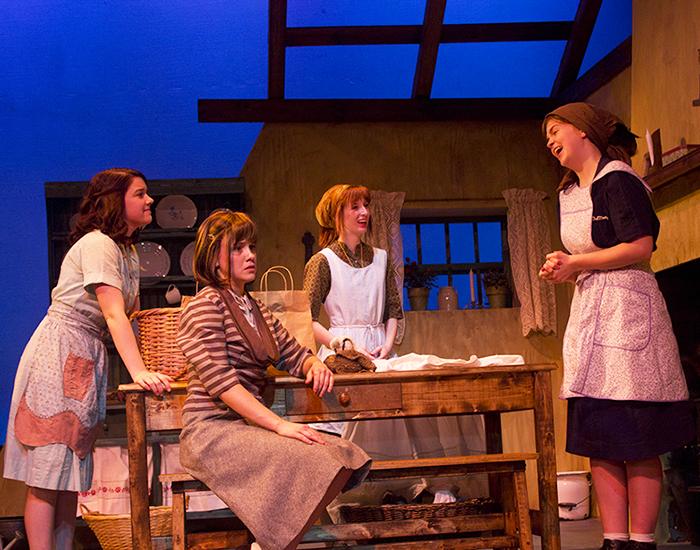From the people who brought you “Rocky Horror Show” comes a tale quite different in nature: “Dancing at Lughnasa”(pronounced Loo-nasa). It is a bittersweet tale of five sisters as they experience the small human joys that flit briefly on the winds of hardship continually blowing through their lives. The sisters live in a quiet rainy town on the west coast of Ireland, in the county of Donegal. They have just received their first wireless radio, nicknamed Marconi, which offers an unreliable respite from their daily toiling. It is the season of Lughnasa, the harvest festival from which the play derives its name. Though Ireland is fastidiously Catholic, many people still take part in this passionate, but pagan, ritual. The sisters feel this passion too, and, though they can only look away from their daily chores for a moment, it lifts their spirits. The unexpected arrival of the long lost Father Jack serves as a surprise for the sisters who have not seen him since he left for missionary work in Africa over 20 years ago. But not all is well with the once greatly respected pastor who now seems to have gone native during his many years among the heathen tribes.
The play was written in 1990 by Brian Friel, who is sometimes called the “Irish Chekhov.” Along with “Philadelphia, Here I Come!,” “Dancing at Lughnasa”is one of his most famous plays, although he has written over 30 throughout the years.
I had a chance to go and take a look at the production before the opening this weekend and was thoroughly impressed. The set, although not completely finished, shows the quiet, rural atmosphere of Ballybeg, the town in which the play is set. Superb yet subtle lighting brings the audience into lovely rendering of the dawn and dusk in the little yard of the Mundy sisters. An ancient Marconi radio rests atop a corner table next to the hearth and cups hang neatly from the cupboard hinges. The sights and sounds of Ballybeg are also brought to life by characters on stage as they dance, sing and clang pots over their heads to the tune of Irish folk dancing. Each character speaks in the local dialect, a most difficult feat, to create an immersive experience.
I also interviewed some of the cast and asked them about their characters. Kelly McCready plays Kate Mundy, a strict Catholic and equally strict schoolteacher who is described as a “straight laced bitch with a lot of love and pride for her family.” All that strictness has a purpose, as Kate is the only sister who works outside the home and does her best to keep the family together, even as it slowly slips away. Kelsey Petersen plays Chris Mundy, the lovely single mother for whom love may yet blossom with her son’s charming but irresponsible father, Gerry Evans, played by Nicholas Pilla. By far the most entertaining of the sisters, Maggie, played by Hilary Wheelock, serves as both the main homemaker and the joker of the family. Yet under the façade of her sarcasm and riddles, she possesses a certain charm and wisdom that brings a sense of balance to the sisters as they contend with their imperceptibly changing lives.
“Dancing at Lughnasa” premieres tonight at 8 p.m. with further performances on Nov. 10, 15, 16, and 17 at 8 p.m., as well as Sunday matinees on Nov. 11 and 18 at 2 p.m.


